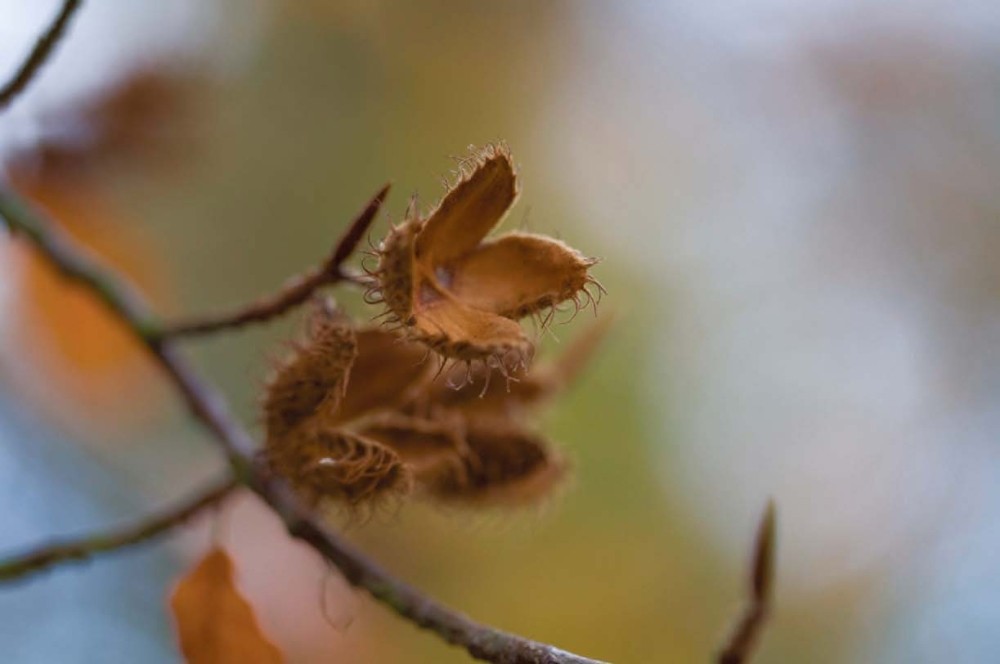Even those who say they don’t know the first thing about trees are likely to appreciate the fact that giant trees emerge from tiny seeds. Really, what sort of grump doesn’t smile at the image of a tree growing from a seed? It’s certainly a worthy inspiration, but it’s not the only miracle. Indeed, before there can be any trees growing from seeds, there must be seeds growing on trees. And if you consider everything that has to go right for a tree to make even one seed, let alone hundreds of thousands of them at a clip, you’ll be even more impressed.
Before it produces a seed, a tree first has to become established and survive to reproductive maturity, the age of which varies widely, from 5-10 years for shade intolerant / shorter-lived species to 30-40 years for shade tolerant/ long-lived species. Once mature, the tree must make sufficient food to stay alive and compete with its neighbors, fuel growth in length and width (to remain healthy), and make new buds containing next spring’s growth. Then, the tree must endure a dangerously cold and often ice-encased winter dormancy and potentially uncooperative spring weather for those buds to open and develop into leaves, shoots, and flowers.
Should all that fall into place without something freezing, eating, or breaking the buds, the flowers still must be pollinated amidst the vagaries of weather and the uncertain fortunes of insects or wind. Then the male and female reproductive cells have to unite through fertilization. And if that all goes swimmingly, the fruits and seeds still must grow and ripen – and avoid being destroyed by adverse weather or the various insects, mammals, and birds that depend on consuming them for their own survival – if the seeds are to be successfully shed with even a chance (still no guarantee) to become a tree. Yikes.
Clearly then, heavy seed production is a big investment for a tree because it consumes large amounts of energy at the expense of other tree needs. Put simply, trees cannot grow as much in heavy seed years as they do in other years, and in many species, the seed crop of one year negatively affects the seed crop of the following year. They rarely have big seed years back to back. And beyond expensive, it’s also a risky scheme. Those energetic investments can and do go for naught at so many different points along the way. Remember, too, that whatever energy a tree devotes to flowering and fruiting it cannot put toward other important physiological processes, like staying alive or growing, for example. So, when trees initiate flowering and fruiting but fail, they waste energy that could have been invested in leaves, branches, trunks, and roots.
Knowing all this, it makes sense that a vigorous tree would produce more successful seed crops than a stressed tree. But curiously, stressed trees do sometimes produce a reactive burst of flowering which – if all goes to plan – leads to enhanced fruit and seed production. Now why would a stressed tree add stress by running down its reserves that could otherwise be used for growth or to recover from the original stress?
One possibility is that, high costs and multiple risks notwithstanding, trees need to produce seed to pass along their genes and perpetuate their kind. This is the biological imperative. It is so important that heavy seed production may be triggered in some trees as a reaction to significant, threatening stress. It’s as if the trees interpret stresses like summer drought or insect defoliation as a sign of the beginning of the end, and they react to impending doom by shifting their precious and hard-won resources away from their own growth and focus on the next generation. In other words, under this hypothesis, stressed trees put what energy they have left into flowering to make baby trees before they can’t.
Perhaps the heavy flowering and fruit production that has been so widespread in Vermont this year was triggered by the double-whammy of stresses that occurred the previous spring and summer when damaging late frosts were followed by a significant July drought. These combined stresses may have been sufficient to trigger an increase in the number of preformed flower buds initiated last summer, which then burst forth so noticeably this spring and summer as flowers, fruits, and now seeds.



Discussion *